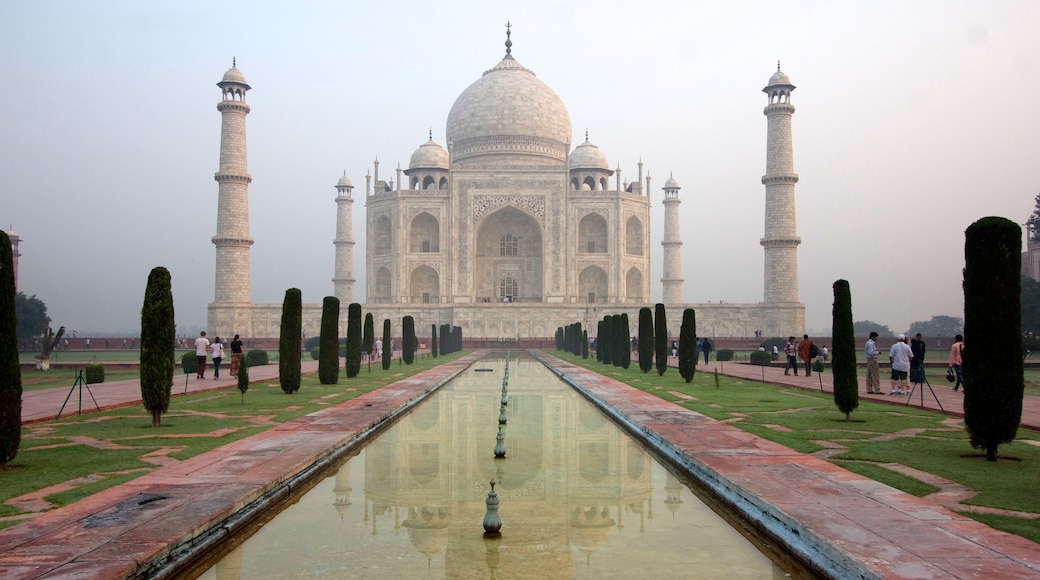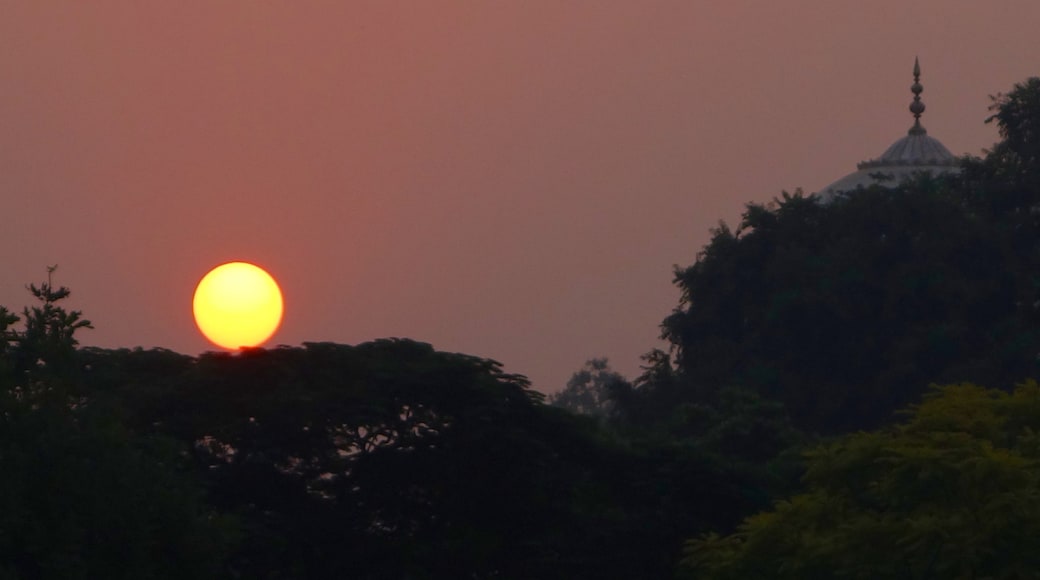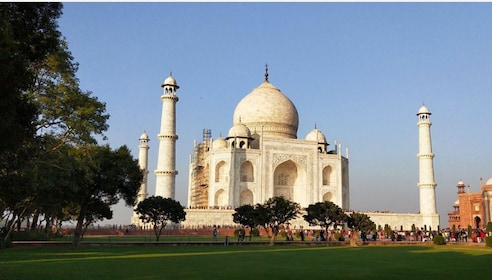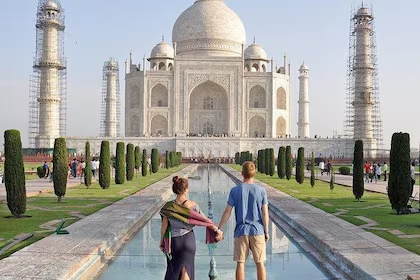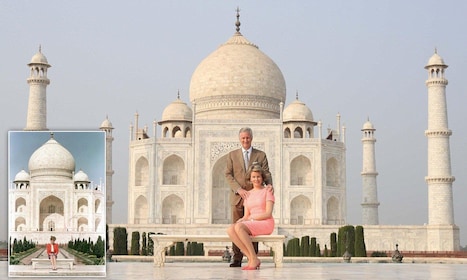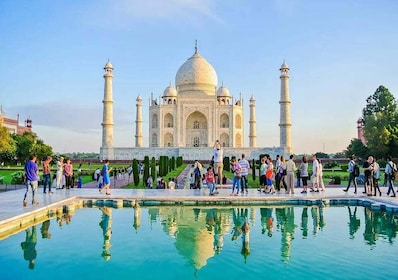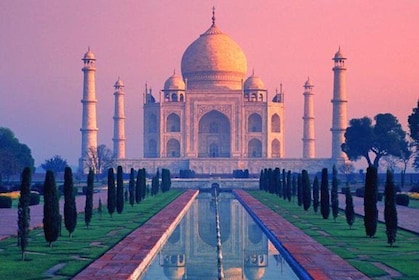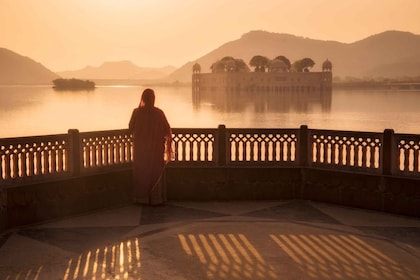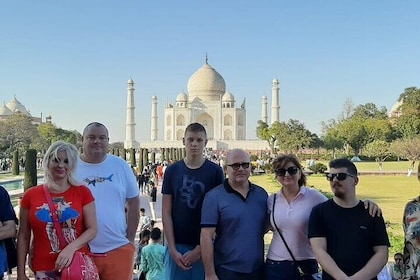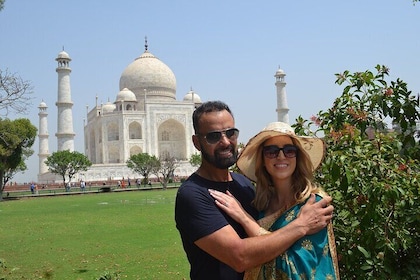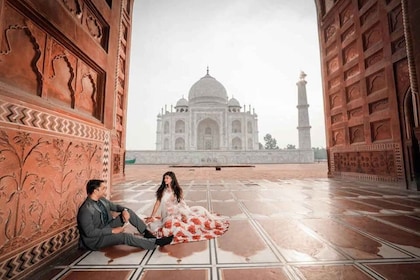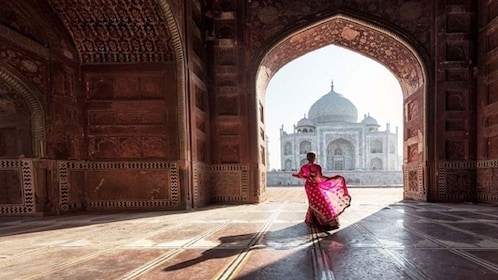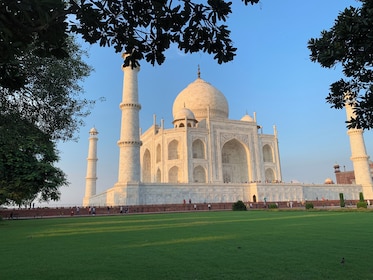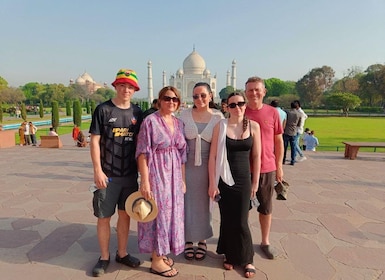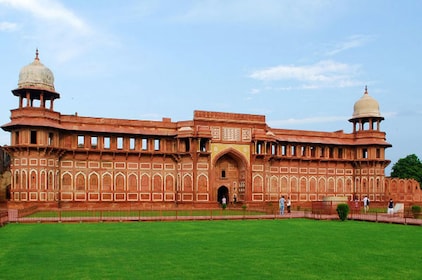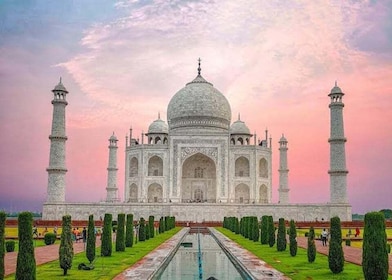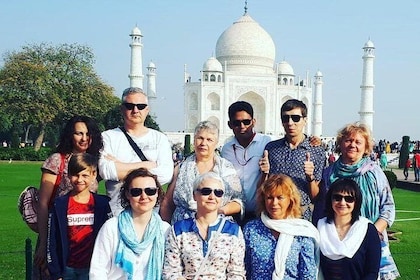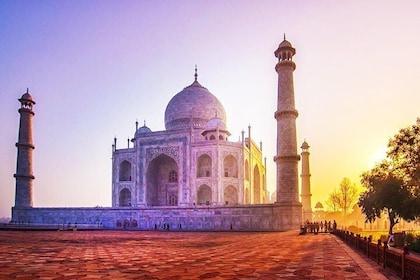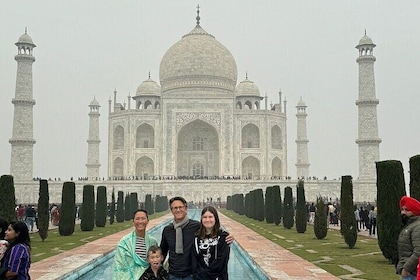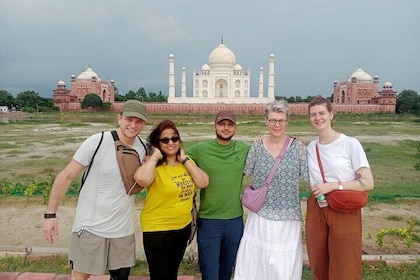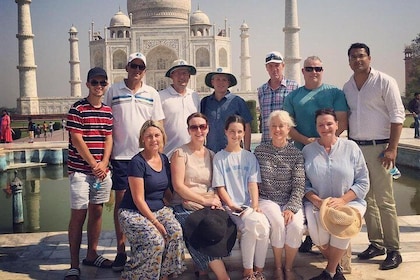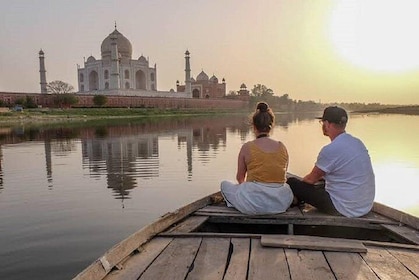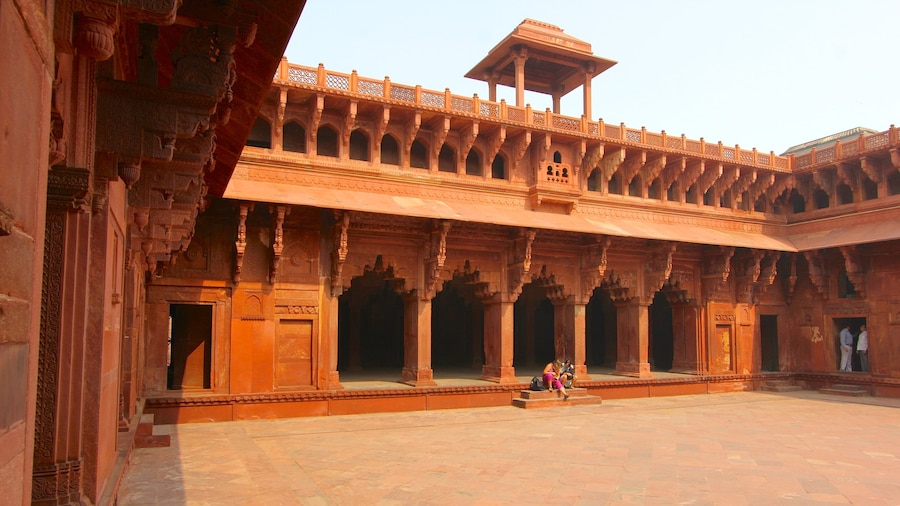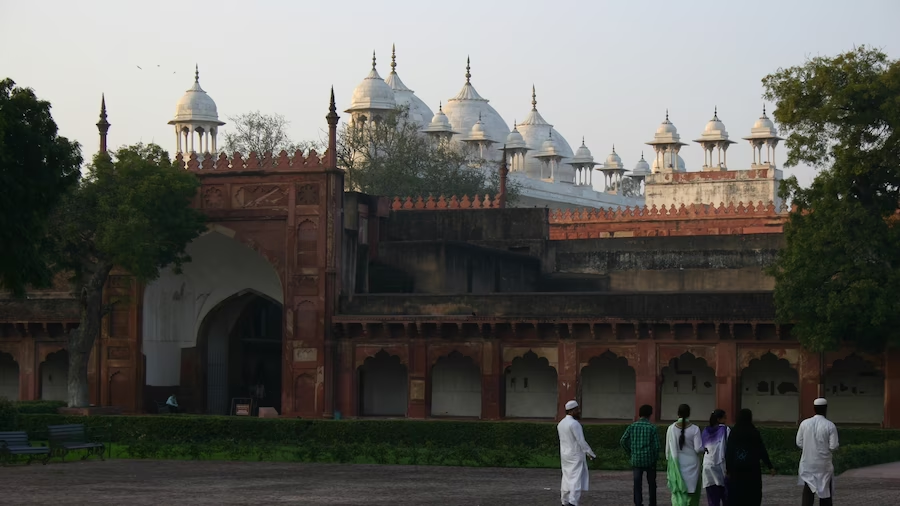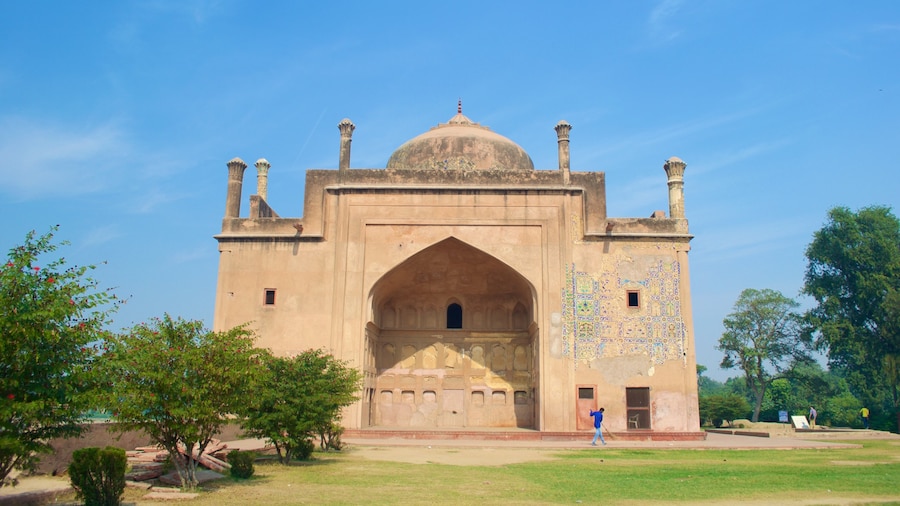The white mausoleum for Shah Jahan’s third wife is a timeless, ingenious work of art. Decorative carvings, stone inlays and mosaics inspire awe of Mughal culture.
On the banks of Agra’s Yamuna River is one of the world’s best-known architectural masterpieces, the Taj Mahal. Conceived by grieving Emperor Shah Jahan for his deceased wife, the marble mausoleum was built over 22 years, involving tens of thousands of stone workers and European inlay experts. Discover its beauty at daybreak as dawn colors light up the white marble.
Enter through red sandstone gates decorated with Quran inscriptions. As you approach, notice the symmetry of the complex, from the structures standing on either side of the mausoleum to the layout of the canals and gardens.
Sitting atop a raised base, the Taj Mahal’s only background is the sky. The huge dome and towering minarets cast a stunning silhouette at dawn. Throughout the day the marble seems to change color with the angle of the sun. Some say the grandiosity of the building was intended to represent the glory of the Mughals.
Look up to notice carved arches with gemstone flowers and calligraphy set into the marble. Once inside, listen for echoes created by the shape of the dome this ensured prayer would reverberate before fading away. In the octagonal main hall, cenotaphs of the Shah and his wife stand amid mosaics and marble screens with spectacular gemstone inlays. The shah’s tomb is not symmetrical, as his intentions for a mausoleum of his own were thwarted when his son seized power.
Get an in-depth history of this remarkable place, including architectural plans, in the Taj Museum located in the western mosque. Here you’ll find examples of artworks, weapons, literature and craftsmanship from the time of Shah Jahan.
Photography is not allowed inside the mausoleum. It is closed to tourists on Fridays. Electric buses, which help reduce smog levels, take you from the ticket office to the monument. Tickets are reasonably priced and discounted for Indian nationals. Your ticket includes entry to nearby Agra Fort, where Shah Jahan was imprisoned by his son.
